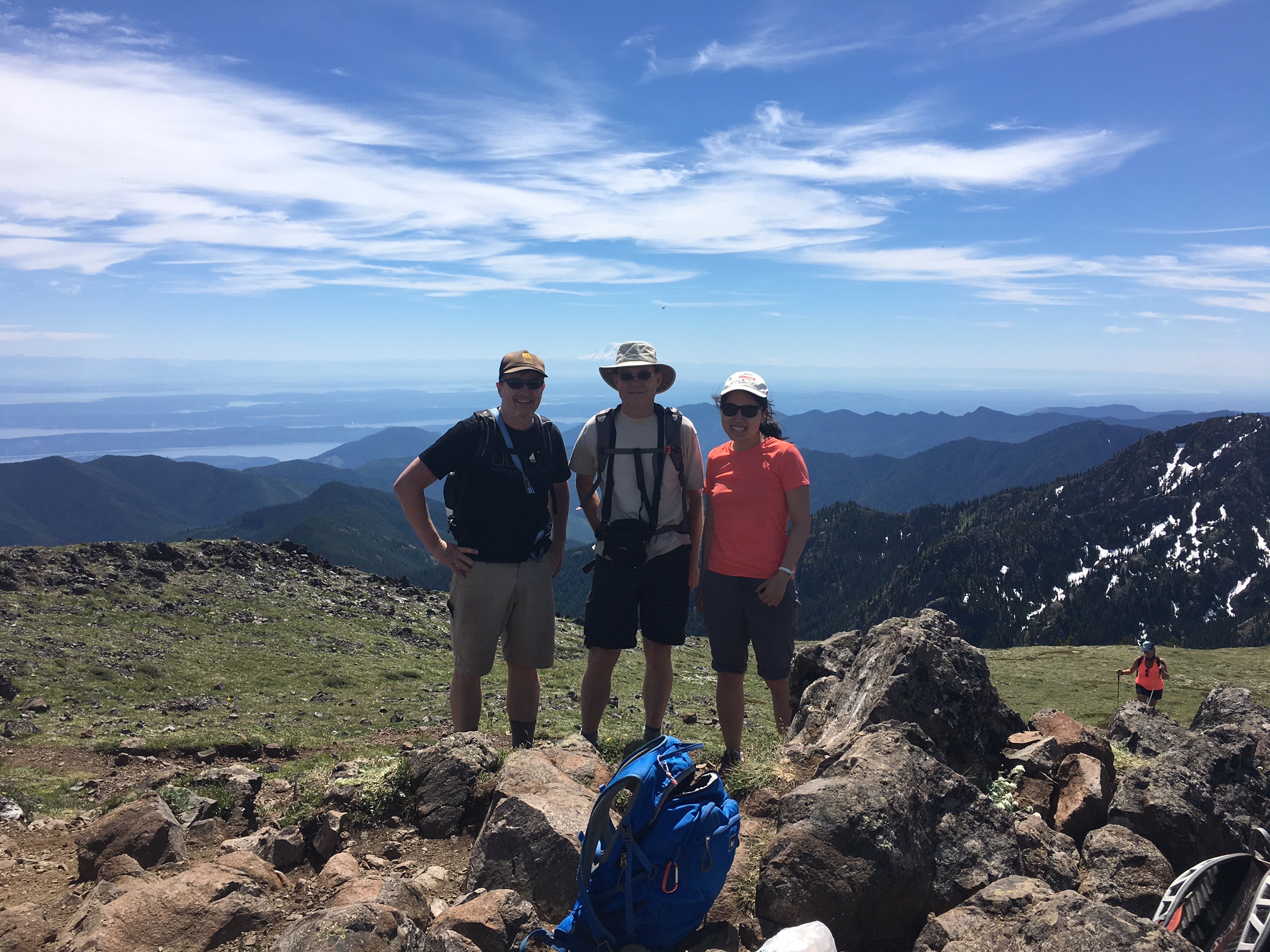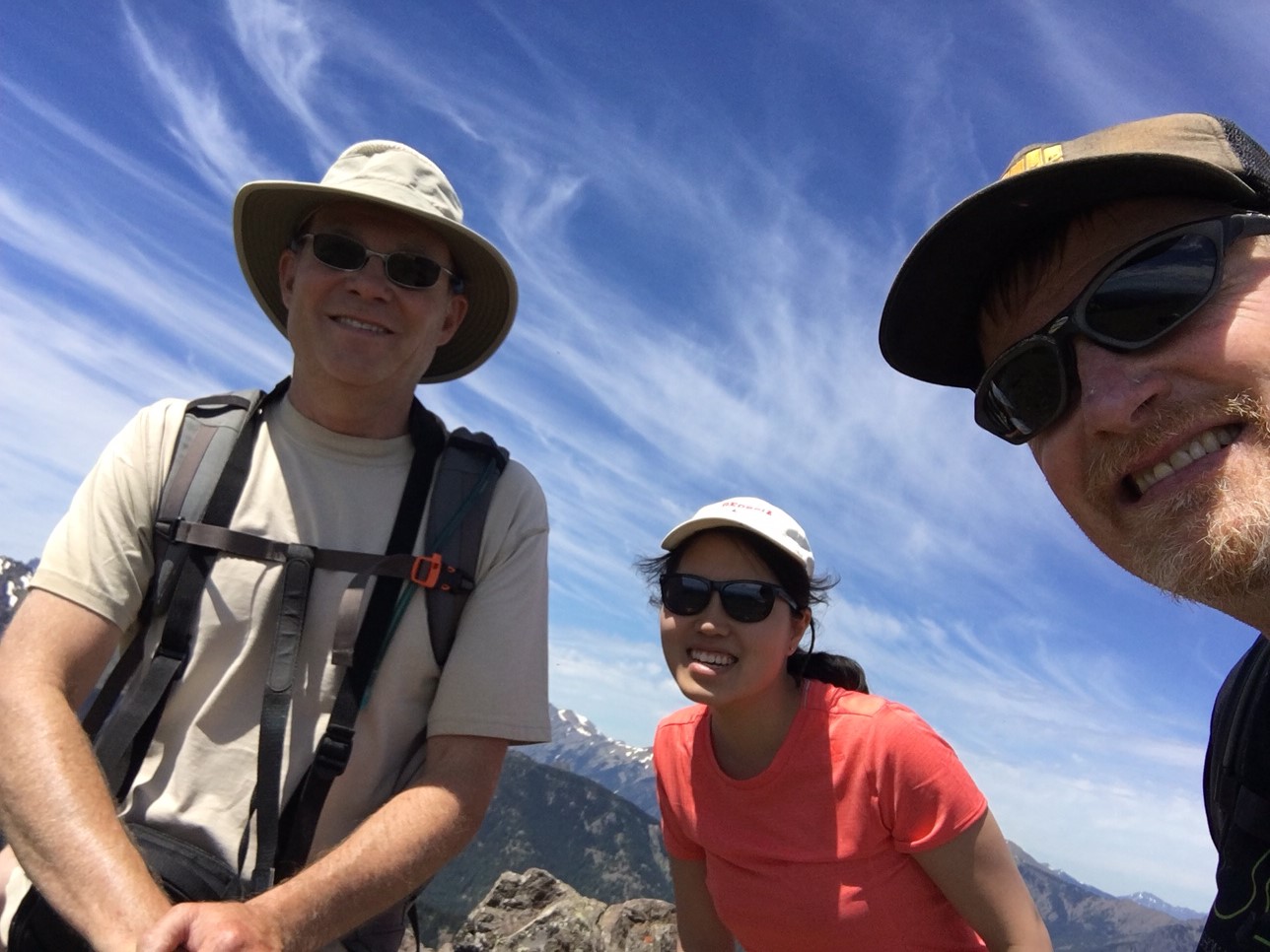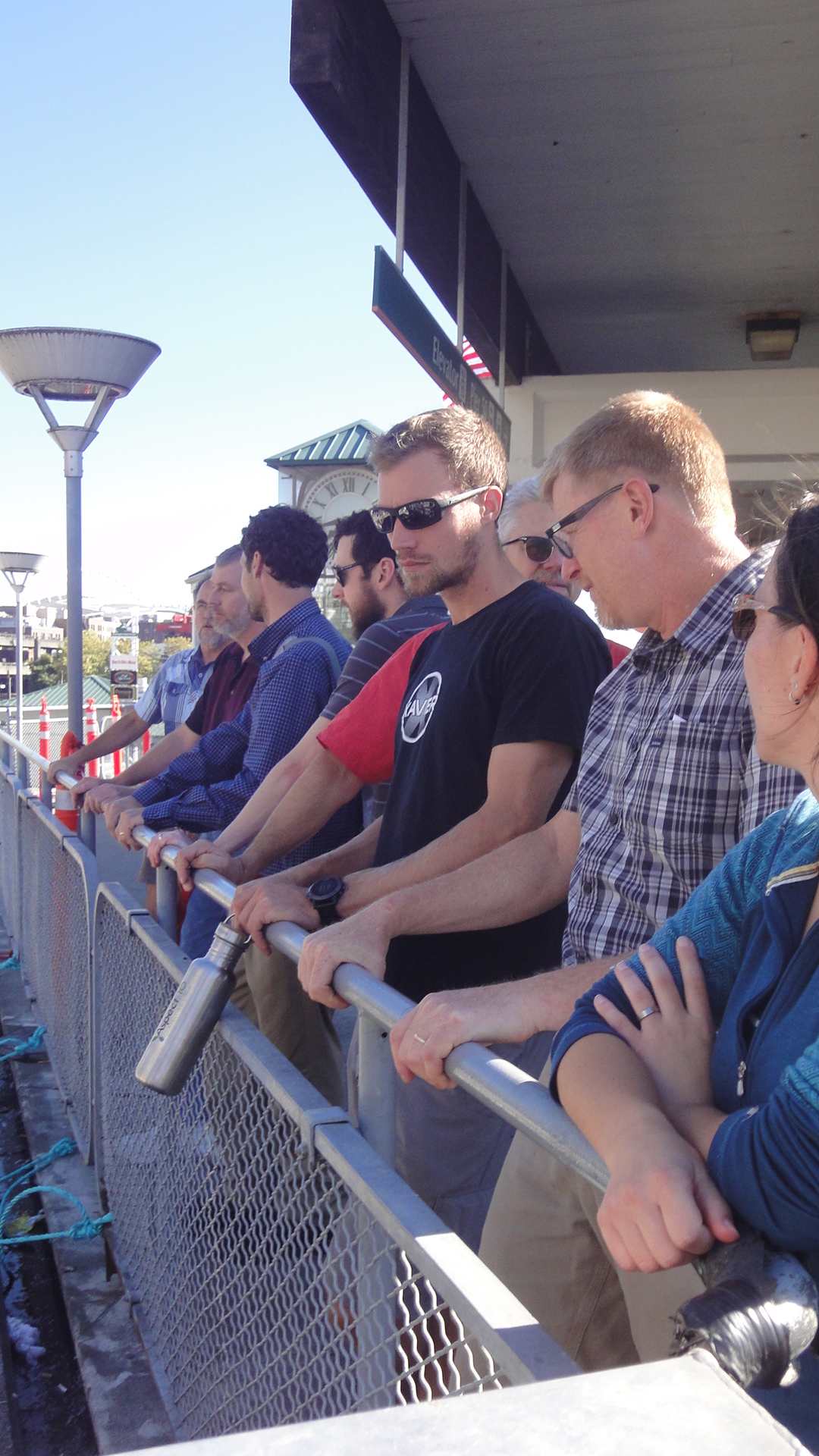Aspect has a rich biking culture – from epic Bike to Work Month challenges complete with branded bike jerseys to impromptu meetups to cruise the neighborhoods and trails around our offices. Principal Geotechnical Engineer Henry H. Haselton, a longtime bike commuter himself, took that enthusiasm to new lengths on AIDS Lifecycle Ride (ALC; www.aidslifecycle.org) a 545-mile cycling journey from San Francisco to Los Angeles. The ride raises money for the San Francisco AIDS Foundation and the Los Angeles LGBT Center and their mission to improve the quality of life for people living with HIV/AIDS. Over seven hard-fought days in June, Henry rode with nearly 2,000 participants, largely from the LGBTQ+ community, who collectively raised $12M for the cause. Here, Henry shares the physical challenges and social realizations he experienced on the journey.
A candlelight vigil held on Ventura Beach for friends, family, and neighbors lost to AIDS
Gearing Up
After several years of slowly declining fitness, I decided in December 2022 to kickstart my way back into shape. In the spring of 2022, I traveled to Berkeley, California, to celebrate my old college roommate’s 60th birthday, and he told me he was doing the ALC ride that summer and encouraged me to do it this year for my 60th birthday. That planted the seed, and I decided that would be my motivation.
I developed a training program that included shorter mid-week rides and longer weekend rides. I largely used my bike commute to Aspect in Seattle as my mid-week rides (these could range from about 16 miles to 40 miles round trip depending on my chosen route). Weekend rides started at about 40 miles and peaked at 90 miles when I rode from my home on Vashon Island to Seattle and made a loop all the way around Lake Washington. The long Saturday ride was always followed by a shorter ride on Sunday to get my body used to daily cycling, which I needed to do for 7 straight days on the actual ALC ride.
I expected this to be a grueling physical challenge and I took my training seriously, which paid off because I finished strong! The physical challenge was real, but I didn’t anticipate the opportunity I would have for some learning moments along the way.
On the Road
With my riding buddies just before departing from the Cow Palace in San Francisco. John (on right) was my college roommate and inspired me to take on this challenge. Maryan (left) is a mutual friend who sadly crashed-out on Day 2.
The ride immersed me in a largely LGBTQ+ community 24/7 for a solid week, which is something I hadn’t experienced before. As someone who identifies as a white heterosexual male—with all the privileges that come with that—it was notably unusual for me to be a minority for this trip, and I got a small taste of what that feels like.
My riding partners both left on the second day (one crashed and the other one hadn’t fully prepared, so he didn’t finish), so I was left solo and positioned to go out and meet all sorts of folks. I had my meals, biked, snacked, partied (in a social way… it is a dry event!) and tented with the community every day and night.
Each night, the ALC staff and volunteers presented a program that summarized the day and got us ready for the next while mixing in testimonials of people’s experiences with AIDS that were inspirational and educational. Their talks described how the funds we had raised provide resources for prevention, care to those affected, and efforts to destigmatize the disease. They also celebrated the queer community through storytelling, sharing successes in overcoming stigmas, dealing with AIDS in a positive way, and performing hilarious and heartwarming accounts of their personal experiences on the ALC ride.
Typical scene at one of the rest stops, that were spaced roughly every 20 miles along the way
Our gear was moved from campsite to campsite in moving vans, and a new “tent city” created every day. There was a huge meal tent with nourishing food, a medical tent, a massage/chiro/acupuncture tent, a technology/charging tent and full-service bike mechanics at every stop and campsite. This tent city sunset is in Santa Maria.
“Outed”
Me (center) sporting one of many Aspect bike jerseys during a stop in Santa Barbara, where the LGBTQ+ community treated us to excellent ice cream, coffee, and treats as a thanks for the support that the ALC ride provides. These are a couple riders from Seattle--there were about 40 of us from this area.
On the fourth night, there was a talent show. The context of one of the performances led to the emcee asking “the straight guys” in the audience to raise their hand. I raised my hand and I was joined by only 2 or 3 others—out of almost 2,000 participants. This was surprising, and in the moment made me feel very much like an outsider. This gave me a small glimpse of what it’s like to be different from the “norm”—not a feeling that a straight white guy has very often.
Some of my tablemates reassured me—they said there were probably more of “my kind” in the crowd, and I was one of the few who had the courage to identify myself. Maybe so… but it really got me thinking, and I seized the opportunity to reflect on the experience.
Sure, it was a little uncomfortable to out myself as a straight guy in this mostly queer crowd, but what I came to realize is that even under those circumstances, my privilege still allowed me to feel safe. That and the incredibly warm and supportive people I was with. That’s a far cry from what it was like for my contemporaries to come out as queer when I was young (that was a long time ago…) and it is still so today.
I’ve honestly thought of this moment just about every day since—this eye-dropper full of discomfort has given me a much broader perspective. It also helped me understand my privilege more clearly, knowing that even with that temporary feeling of being an outsider, I’m not having to worry about potentially negative biases toward me on a regular basis.
Reflections at the Finish Line
I was honored to get an “ussie” with the executive director, Tracy Evans (a truly remarkable person!), at the finish line in Santa Monica.
As I rolled into the finish area in Santa Monica, I was greeted by a crowd of supportive people cheering me on. I came out of the experience proud of my physical accomplishment, but more so energized by the experience I had with this community, the things I learned, the vulnerability I embraced, the good times we shared, and the better understanding of my privilege. I am more physically fit than I was before I started training, and – I hope – a stronger ally to my queer family members, friends, and neighbors. I will bring this strengthened allyship into my work at Aspect as we continue our efforts to build a more inclusive workplace.













